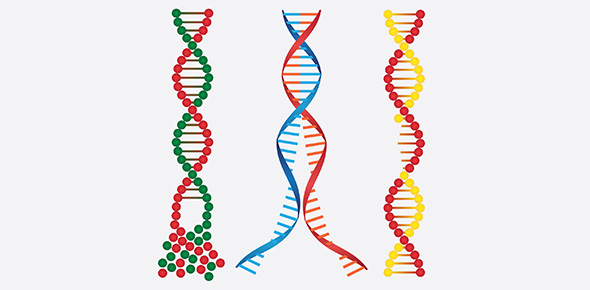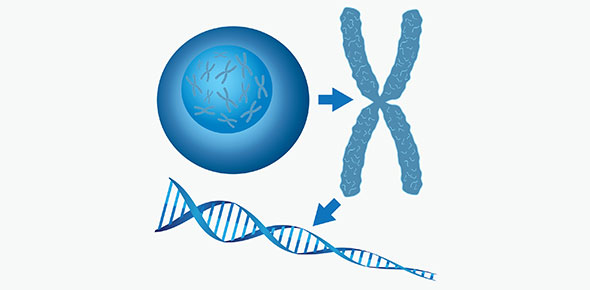Related Flashcards
Related Topics
Cards In This Set
| Front | Back |
|
What are double ringed nitrogenous bases called, and what are they?
|
Purines/ guanine and adenine
|
|
What are single ringed nitrogenous bases called, and what are they?
|
Pyrimidines/ cytosine and thymine (they all have ''y's")
|
|
What is the name of the rule that refers to the complementary nature of DNA? (Number of Adenine = Number of Thymine and Number of Cytosine = Number of Guanine)
|
Chargaff's Rule
|
|
The process of DNA making a copy of itself is called
|
Replication; average speed: 20 nucletides per second are added to new strand
|
|
When replication is completed, each molecule will have one original template strand. This is called
|
Semi-conservative replication
|
|
In DNA replication, new strands always begin at its __ end and nucleotides are added to its __ end.
|
5' , 3'
|
|
Enzymes responsible for building a DNA polymer; there are more than one kind; they catalyze the addition of nucleotides to the 3' end of the strand and cannot start the strand
|
DNA polymerases
|
|
Molecules in the nucleus that provide the substrates to build a new strand of RNA or DNA; have 3 phosphate groups
|
Free nucleotides
|
|
Specific sequences on the DNA template strand where replication begins
|
Origin of replication
|
|
Giant cloud of molecules that contain all enzymes, all substrates, and everything needed for replication --moves along the DNA molecules--replication only occurs where this is
|
DNA replication machine
|
|
Enzyme responsible for pulling the DNA helix apart; breaks hydrogen bonds
|
DNA helicase
|
|
Proteins that bind to the strands, keeping them apart so replication can occur
|
Single-strand binding proteins
|
|
Point where the two template strands of DNA are being pulled apart (y-shaped structure)
|
Replication fork
|
|
New strand built in the same direction that the replication fork is moving
|
Leading strand
|
|
New strand built in the opposite direction of the movement of the replication fork
|
Lagging strand
|






